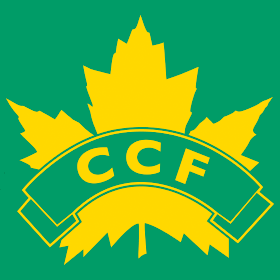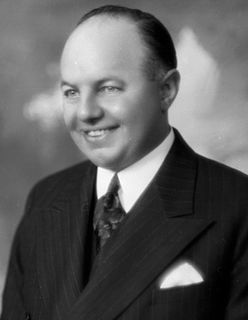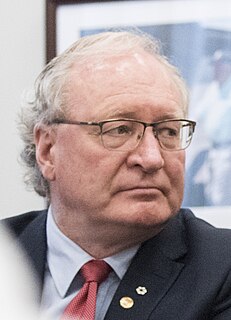This article needs additional citations for verification .(February 2016) (Learn how and when to remove this template message) |
| |||||||||||||||||||||||||||||||||||||||||
90 seats in the 20th Legislative Assembly of Ontario 46 seats were needed for a majority | |||||||||||||||||||||||||||||||||||||||||
|---|---|---|---|---|---|---|---|---|---|---|---|---|---|---|---|---|---|---|---|---|---|---|---|---|---|---|---|---|---|---|---|---|---|---|---|---|---|---|---|---|---|
| |||||||||||||||||||||||||||||||||||||||||
| |||||||||||||||||||||||||||||||||||||||||
The Ontario general election, 1937 was held on October 6, 1937, to elect the 90 Members of the 20th Legislative Assembly of Ontario ("MLAs"). It was the 20th general election held in the Province of Ontario, Canada.

Ontario is one of the 13 provinces and territories of Canada and is located in east-central Canada. It is Canada's most populous province accounting for 38.3 percent of the country's population, and is the second-largest province in total area. Ontario is fourth-largest jurisdiction in total area when the territories of the Northwest Territories and Nunavut are included. It is home to the nation's capital city, Ottawa, and the nation's most populous city, Toronto, which is also Ontario's provincial capital.
Contents
The Ontario Liberal Party, led by Mitchell Hepburn, was re-elected for a second term in government, with a slightly reduced majority in the Legislature.
The Ontario Liberal Party is a provincial political party in the province of Ontario, Canada. The party is ideologically aligned with the Liberal Party of Canada but the two parties are organizationally independent and have separate, though overlapping, memberships.

Mitchell Frederick Hepburn was the 11th Premier of Ontario, Canada, from 1934 to 1942. He was the youngest Premier in Ontario history, appointed at age 37. His personality was complex, as The Globe and Mail noted in its obituary for him:
A majority government refers to one or multiple governing parties that hold an absolute majority of seats in legislature. This is as opposed to a minority government, where the largest party in a legislature only has a plurality of seats.
The Ontario Conservative Party, led by William Earl Rowe, was able to win six additional seats, and continued to form the official opposition.
William Earl Rowe,, was a politician in Ontario, Canada. He served as the 20th Lieutenant Governor of Ontario from 1963 to 1968.
Meanwhile, the fledgling democratic socialist Co-operative Commonwealth Federation (CCF) ran 37 candidates out of a possible 90, led by party president John Mitchell running in Waterloo South, who also campaigned throughout the province on the party's behalf. [1] The election, however, resulted in a modest decline in popular vote and the loss of the party's sole MLA, Sam Lawrence in Hamilton East.

The Co-operative Commonwealth Federation – The Farmer-Labor Party of Ontario, or more commonly known as the Ontario CCF, was a democratic socialist provincial political party in Ontario that existed from 1932 to 1961. It was the provincial wing of the federal Co-operative Commonwealth Federation (CCF). The party had no leader in the beginning, and was governed by a provincial council and executive. The party's first Member of the Legislative Assembly (MLA) was elected by voters in the 1934 Ontario general election. In the 1937 general election, no CCF members were elected to the Ontario Legislature. In 1942, the party elected Toronto lawyer Ted Jolliffe as its first leader. He led the party to within a few seats of forming the government in the 1943 general election; instead, it formed the Official Opposition. In that election, the first two women were elected to the Ontario Legislature as CCFers: Agnes Macphail and Rae Luckock. The 1945 election was a setback, as the party lost most of its seats in the Legislature, including Jolliffe's seat. The party again became the Official Opposition after the 1948 general election, and defeated the Conservative premier George Drew in his seat, when Bill Temple unexpectedly won in the High Park constituency. The middle and late 1940s were the peak years for the Ontario CCF. After that time, its electoral performances were dismal, as it was reduced to a rump of two seats in the 1951 election, three seats in the 1955 election, and five seats in the 1959 election. Jolliffe stepped down as leader in 1953, and was replaced by Donald C. MacDonald.

Sam Lawrence is an American entrepreneur, and founder of several Internet companies, including Jive Software, where he was the founding CMO, and Crushpath, a free marketing platform, where he is currently CEO and co-founder.
Hamilton East is a former provincial electoral district in Ontario, Canada. It was represented in the Legislative Assembly of Ontario from 1894 to 2007, when it was redistributed between the new ridings of Hamilton Centre and Hamilton East—Stoney Creek. It was originally created from the old riding of Hamilton, split in 1894 to create Hamilton East and Hamilton West.
Incumbent MLA Farquahar Oliver was the last remaining United Farmers of Ontario MLA and ran as the party's sole candidate in the election. In practice, however, he had been a supporter of the Liberal government and would join Hepburn's cabinet in 1940, formally joining the Liberal Party.
The United Farmers of Ontario (UFO) was an agrarian and populist provincial political party in Ontario, Canada. It was the Ontario provincial branch of the United Farmers movement of the early part of the 20th century.
In 1938, MLAs voted to adopt the title "Member of Provincial Parliament", and became known as "MPPs".
A Member of Provincial Parliament (MPP) is an elected member of the Legislative Assembly of the Province of Ontario, Canada.
This Ontario election was the last to date in which the winning party has won an absolute majority of the popular vote.








